© ROOT-NATION.com - Use of content is permitted with a backlink.
The Mirage 2000-5 is a multi-role combat fighter jet developed by the French aerospace company Dassault Aviation. Let’s get acquainted with this aircraft.
On June 6, French President Emmanuel Macron officially announced that France would deliver Mirage 2000-5 fighters to Ukraine by the end of 2024. The associated training program for pilots and technicians will take six months and is set to begin soon.
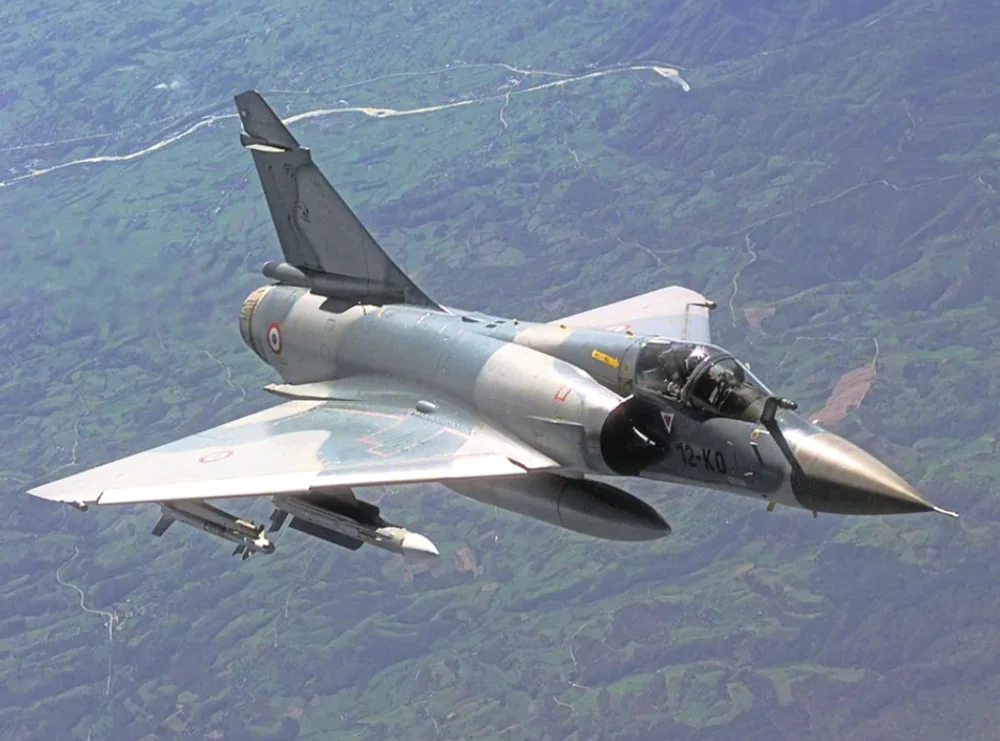
Read also: Weapon of Ukrainian Victory: Saab ASC 890 Early Warning and Control Aircraft (Saab 340 AEW&C)
What is interesting about Mirage 2000-5
The Mirage 2000 is a multi-role combat fighter jet developed by the French aerospace company Dassault Aviation. It has been in service with the French Air Force since 1984 and is also operated by the air forces of Egypt, Greece, India, Peru, Qatar, Taiwan, and the United Arab Emirates. Soon, this fighter jet might also become a part of the Ukrainian Air Force.
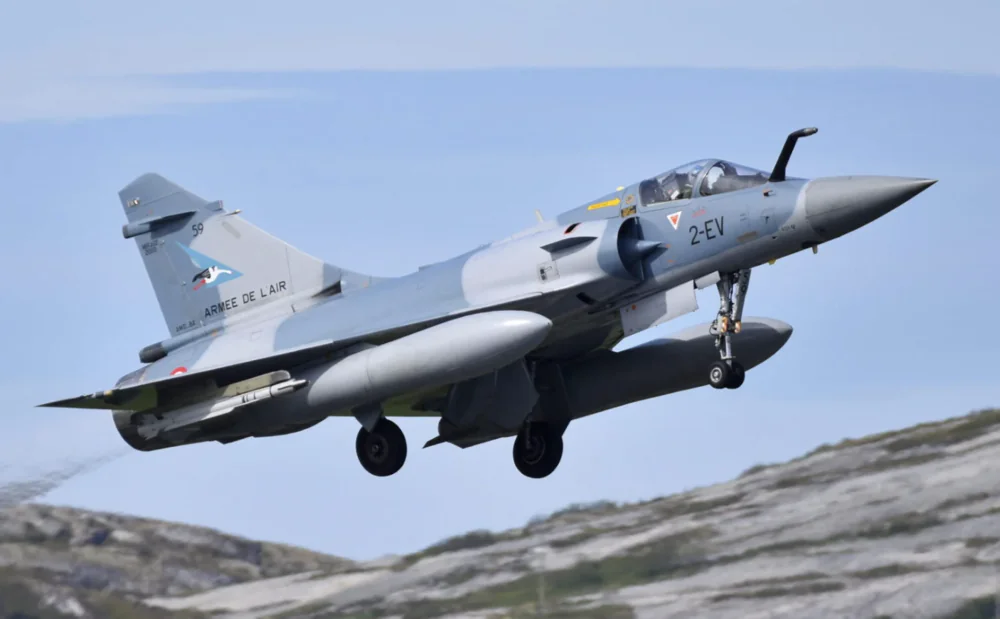
It should be noted that the French Air Force uses several modifications of the Mirage 2000. These include the Mirage 2000C/B, a single-seat and two-seat air defense aircraft; the Mirage 2000N, a two-seat all-weather aircraft designed for low-altitude, high-speed nuclear strikes; the Mirage 2000D, an upgraded version of the Mirage 2000N for automated bombing with conventional and laser-guided munitions; and the Mirage 2000-5, which features advanced avionics, new multi-target “air-to-ground” and “air-to-air” firing procedures using the RDY radar, as well as new sensors and control systems. It is this latest modification that France plans to transfer to Ukraine.
Read also: Weapons of Ukrainian Victory: Long-range AASM Hammer bombs
History of the Mirage 2000
The initiative known as “Futur avion de combat” (fighter of the future) was launched in the early 1970s in response to a request from the French Air Force. This led to the creation of one of the most agile and aesthetically pleasing fighters in the world, the Mirage 2000.
In 1975, the manufacturer Dassault Aviation proposed the twin-engine Dassault Mirage, but the jet proved to be prohibitively expensive, leading to the project being shelved. Subsequently, Dassault Aviation proposed the single-engine Dassault 2000 as an alternative, and on December 18, 1975, the French government authorized the further development of the project.
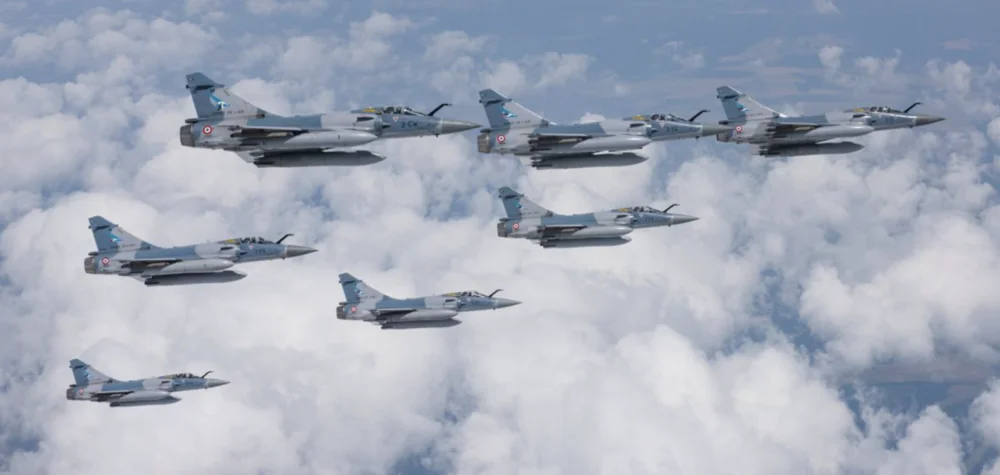
The prototype of the aircraft had its first flight on March 10, 1978. Not only did it incorporate new technologies, but the foundation of the new plane was also altered. The Mirage 2000 was designed to replace the outdated Mirage III.
At the Farnborough Airshow in the summer of 1978, the aircraft demonstrated its remarkable maneuverability, capable of turning at a speed of 204 km/h with an angle of attack of 26°. The Mirage 2000 was one of the main highlights of the airshow, quickly becoming a direct competitor to the F-16.
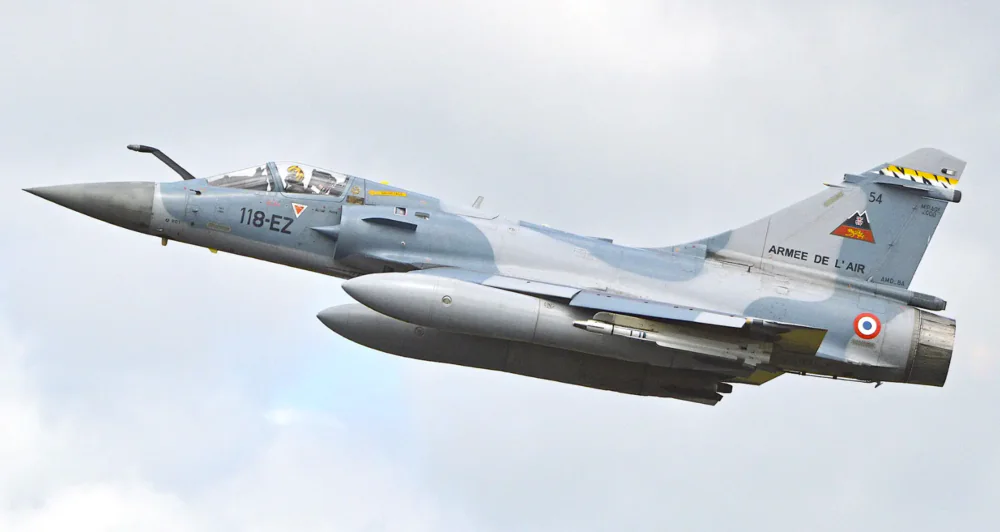
On October 11, 1980, the twin-seat Mirage 2000B took its first flight following the construction of the fourth prototype. In total, four single-seat prototypes were built, one of which was the Mirage 2000.
Production of the Mirage 2000C began in November 1982, with the first deliveries occurring the following year. The first operational squadron of the French Air Force was established in 1984 to commemorate the 50th anniversary of the French Air Force. The French military ultimately had 124 Mirage 2000C units. Initially, there were only 37 Mirage 2000C aircraft in service, each equipped with the Thomson-CSF RDM multifunction radar and the SNECMA M53-5 P2 turbofan engine. This engine made the Mirage 2000C the most powerful Mirage ever built.
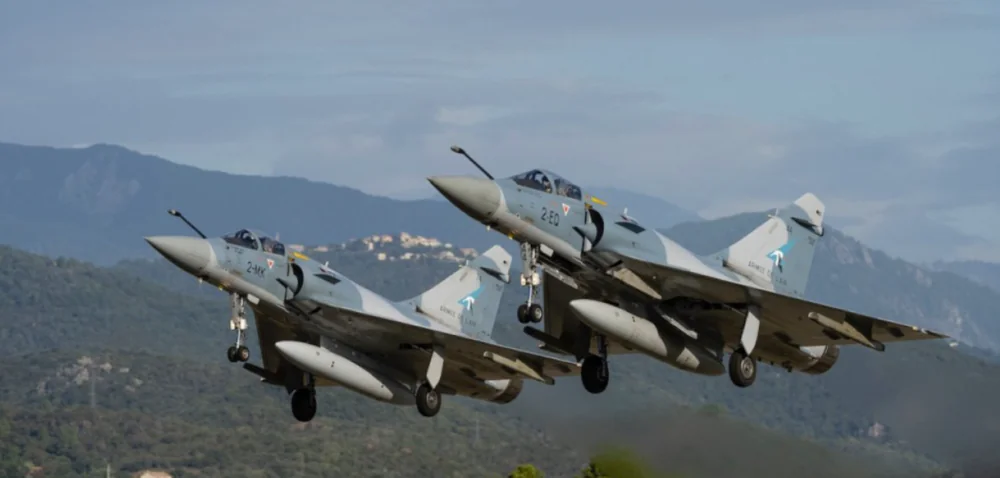
The Thales pulse radar, which first entered service in 1987, was specifically developed for the Mirage 2000C. It improved the aircraft’s “look-down” capability and enhanced its “shoot-down” targeting ability. However, this radar was used solely for guiding air-to-air missiles and not for air-to-ground missiles.
Interestingly, the Mirage 2000C model was featured in the 2005 French film “Sky Fighters” (“Les Chevaliers du ciel”).
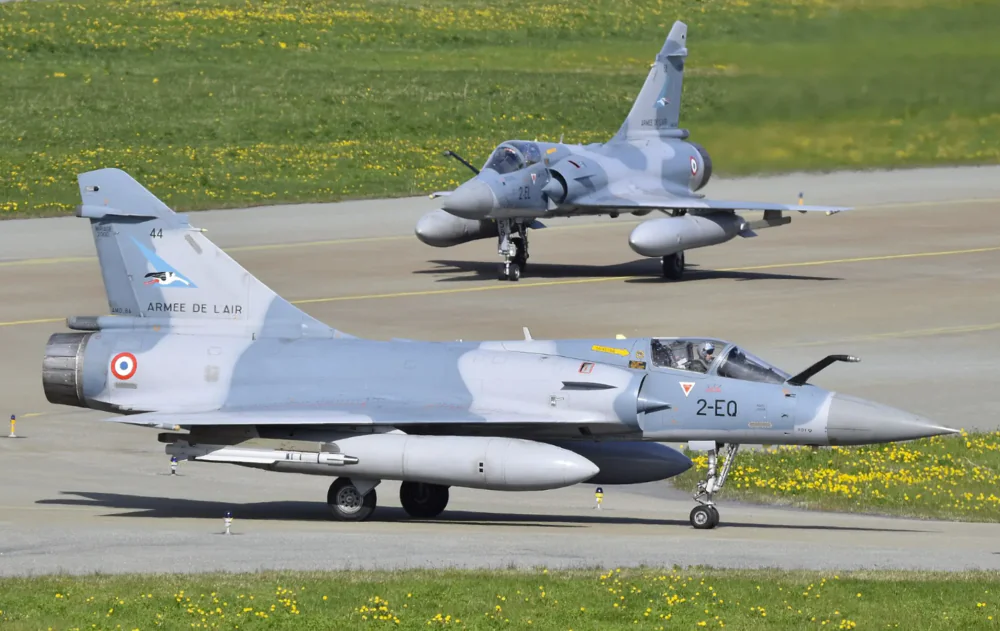
The next variant, the Mirage 2000N, was specifically designed for nuclear strike missions, equipped with the Air-Sol Moyenne Portée (ASMP) nuclear missile. Two prototypes of the Mirage 2000N/Mirage 2000D were first tested on February 3, 1983. The Mirage 2000N entered service in 1988, with a total of 75 aircraft built.
The Mirage 2000D, developed from the Mirage 2000N, was intended for conventional attack roles. The modified Mirage 2000D model first took to the skies on March 31, 1993.
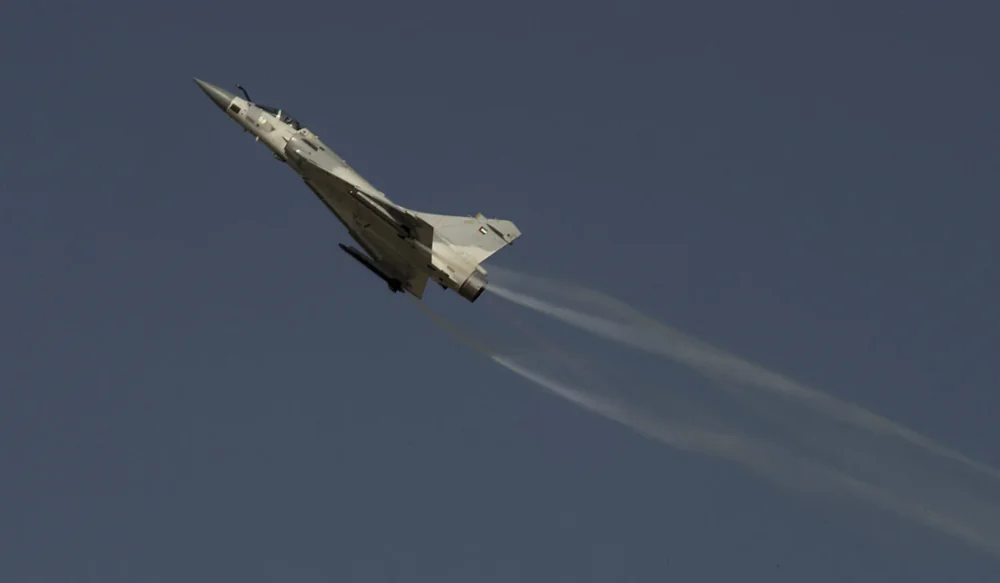
After a decade of development, the Mirage 2000 fighter jet began to rival the latest models of the American F-16 fighter.
In the early 1990s, Dassault Aviation unveiled the prototype of the two-seater Mirage 2000B. This marked the debut of the Mirage 2000-5 prototype, which made its first flight on October 24, 1990. We will focus more on this model because there is a high probability that France will transfer it to the Ukrainian Air Force.
Read also: Saab JAS 39 Gripen as an option for Ukraine’s Air Forces: what kind of plane is it?
Mirage 2000 design
The latest generation Mirage 2000-5 is available in single-seat and two-seat versions. The two-seat Mirage 2000-5 Mk2 retains all the operational capabilities of the single-seat version, including the ability to reach speeds of up to Mach 2.2. Dassault decided to utilize the “old” delta-wing interceptor concept, which we saw in the Dassault Mirage III. However, the company managed to build a new fighter jet design. Some experts point out that this configuration is not ideal in terms of maneuverability, especially at low altitudes, and requires more distance for takeoff and landing. However, it has its advantages such as high-speed flight characteristics, simplicity of design, low radar signature, and so on.
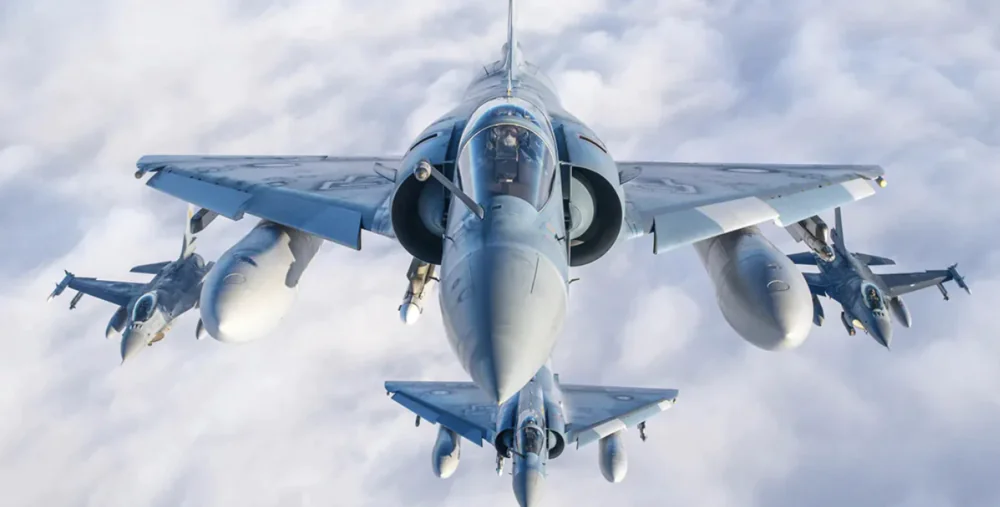
Let’s take a closer look at the design of the Mirage 2000-5 aircraft. It features a low-set thin delta wing with a curved section, a leading-edge sweep angle of 58°, and a moderate base tilt. The aircraft is quite maneuverable, with two small wings fixed and located just behind the air intakes. Flight control surfaces on the wings consist of four elevons (control surfaces) and four slats. In the tail section, there may be a hook for arresting the aircraft on the runway or a fairing for a braking parachute.
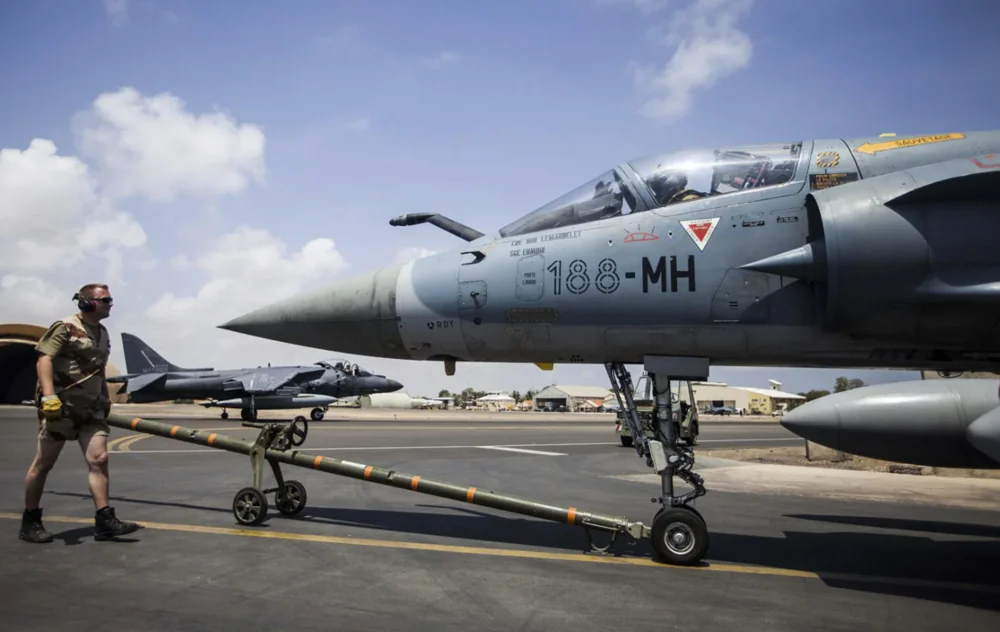
The landing roll is reduced by robust carbon brakes. The steerable nose gear with retraction has twin wheels, while the main gear has single wheels and retracts inward into the wings. A fixed retractable refueling probe can be attached in front of the cockpit, slightly offset to the right of the center position.
Read also: Weapons of Ukrainian Victory: L3Harris VAMPIRE Multi-purpose System – “Drone Killer”
Mirage 2000-5 avionics
Here are some interesting facts. Like most aircraft of its type, the Mirage 2000-5 is equipped with the Thales RDY 2 radar. Essentially, it’s a state-of-the-art long-range Doppler radar. What makes it particularly intriguing is its ability to automatically switch between detection, tracking, and fire control modes, making it unparalleled for aerial combat. The RDY 2 radar meets the essential requirements of modern air combat, including engaging multiple targets. It employs three pulse repetition frequencies (PRFs) with auto-monitoring frequencies for target detection. Experts often note its effectiveness at all altitudes, providing early detection combined with continuous target tracking at a high level. Moreover, the RDY 2 radar can be used for reconnaissance purposes, as it can conduct terrain analysis based on high-resolution imaging.
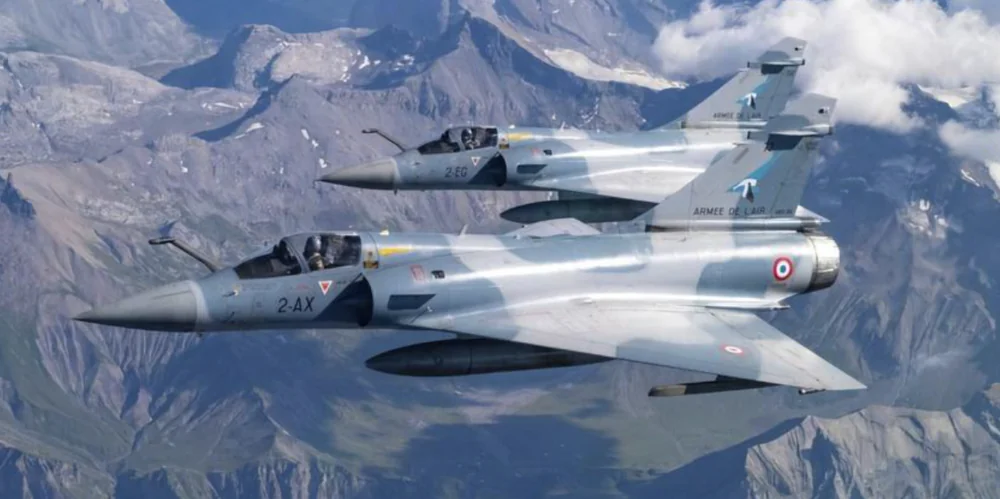
It’s also worth noting that its laser gyroscope, an inertial system closely tied to GPS, boasts high reliability, accuracy, and a short alignment time (both on the ground and in flight). The fully integrated internal countermeasure system is capable of detecting, identifying, and localizing the most dangerous threats with the highest precision, both in the air and on the ground.
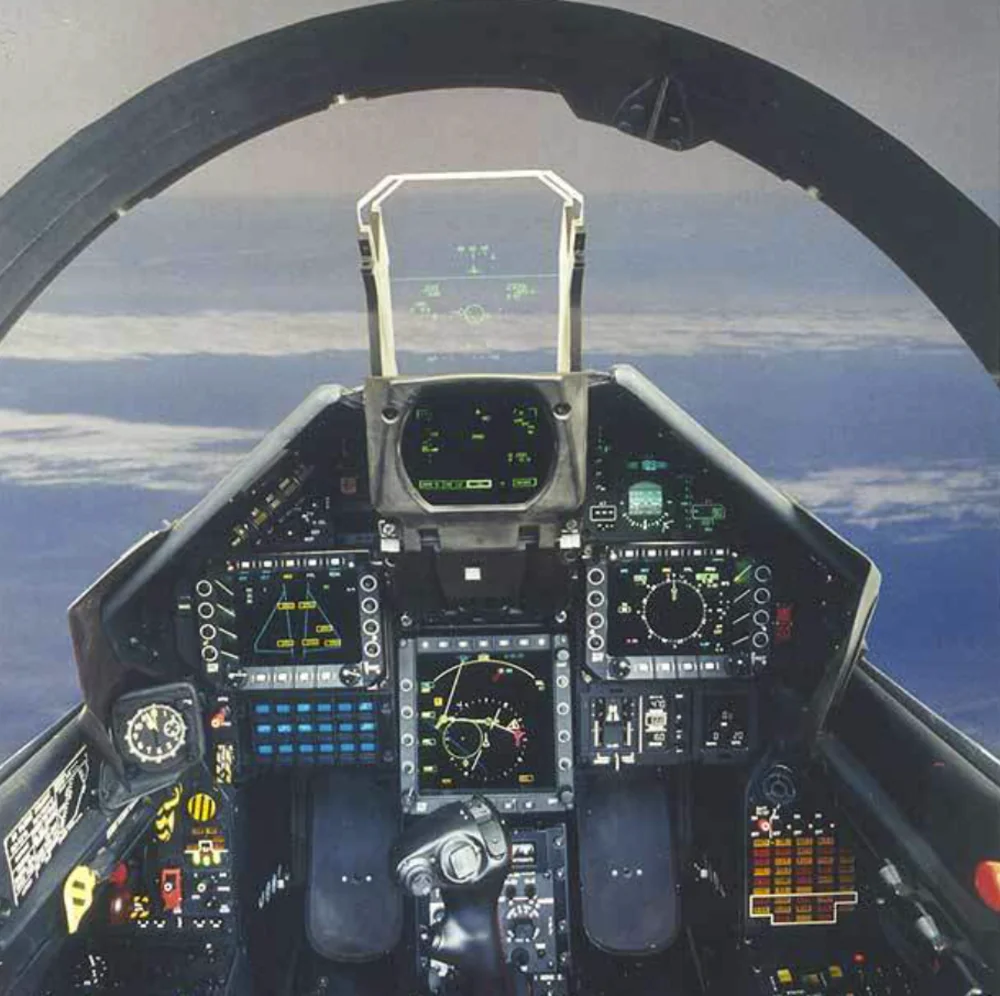
In the Mirage 2000-5 Mk2, the “Glass Cockpit” technology is employed, which is more advanced compared to previous versions. This aids the pilot in flight management and aims to simplify configuration changes during combat. The instrument panel contains 5 displays, including 3 color ones. The central screen is mainly intended for displaying tactical situations. Between this screen and the Head-Up Display is another screen, collimated to infinity. It shows the main sensor image, as well as radar or laser designation data. The Mirage 2000-5 is equipped with the upgraded ULISS 52P navigation system with global positioning system (GPS) capabilities and the enhanced Antilope 50 terrain observation system. Additionally, it features the upgraded “ICMS 2” countermeasure system with SERVAL RWR dispensers, Chameleon Jammer, and Spirale.
Read also: Weapons of Ukrainian Victory: NASAMS air defense that protects Washington
Mirage 2000 engines and range
The Mirage 2000 is powered by the SNECMA M53-P2 turbofan engine, which provides a thrust of 64 kN and 98 kN with afterburner. The air intakes are equipped with a controllable central semi-conical body, which ensures a tilted air pressure shock for highly efficient air intake.
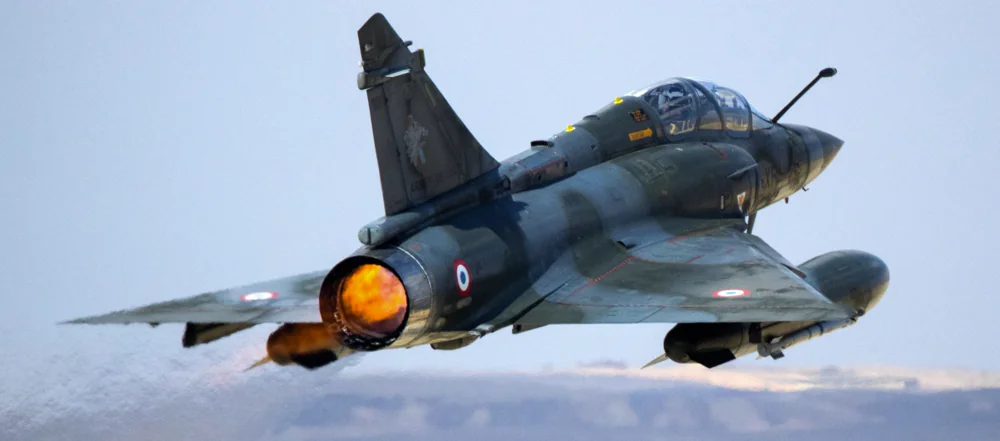
Thanks to its powerful engines, the Mirage 2000-5 can climb at a rate of 285 m/s. Its maximum and climb speeds are 2340 km/h and 259 km/h respectively, with a flight range of 3335 km. Its range and maximum flight altitude are 1550 km and 17.06 km respectively.
Read also: Weapons of Ukrainian victory: Storm Shadow / SCALP-EG cruise missiles
Armaments
The Mirage 2000-5 can carry armaments on nine hardpoints: four under the wings, four under the fuselage, and one on the centerline. Additionally, the single-seat version is armed with two internally mounted 30mm high-rate-of-fire cannons.
It’s worth noting that the Mirage 2000-5 can carry both missiles and guided aviation bombs on its pylons. The aircraft is capable of carrying multi-role air-to-air missiles for interception and MICA missiles, as well as Magic 2 missiles or combined missiles from MBDA, created as a result of the merger of Matra BAe Dynamics, EADS Aerospatiale, and Alenia Marconi Systems. The MICA missiles have a claimed target destruction range of up to 80 km. It’s important to remember that they are produced in two variants: with infrared and radar homing seekers.

The aircraft can simultaneously carry four MICA missiles, two Magic missiles, and three guided aviation bombs. The Mirage 2000-5 can also launch the MBDA Super 530D missile or the MBDA Sky Flash air-to-air missile as an alternative to the MICA missile.
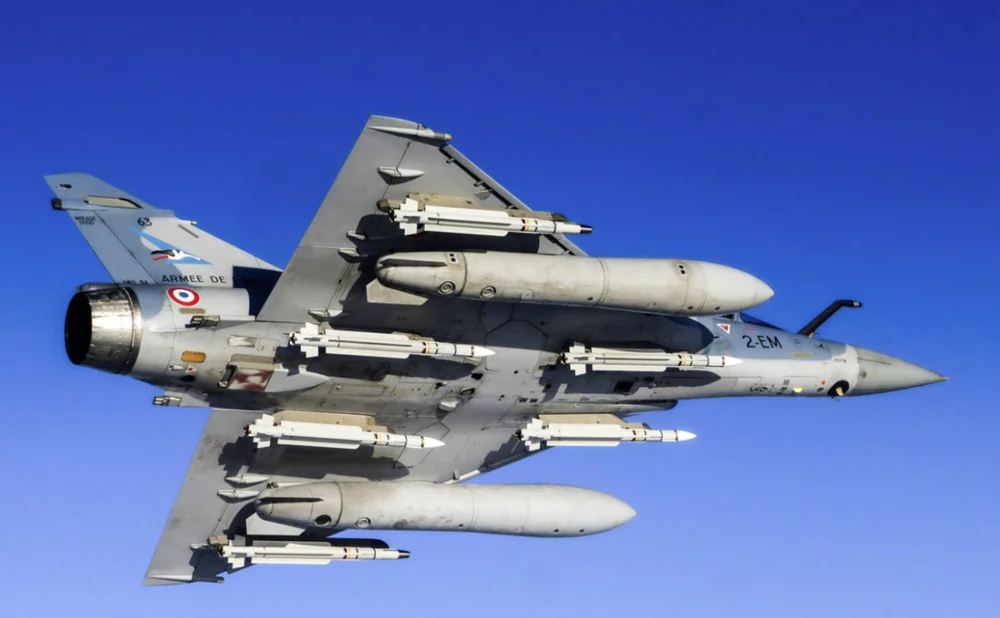
Most interestingly, the Mirage 2000-5 is also equipped to carry a range of air-to-ground missiles and aviation bombs, including laser-guided bombs. These include the MBDA BGL 1000 laser-guided bomb, MBDA AS30L, anti-radiation missile MBDA Armat, anti-ship missile MBDA AM39 Exocet, rocket launchers MBDA, MBDA Apache smart bomb, and the low-observable Storm Shadow / Scalp EG cruise missile. The latter is well-known to all of us as it has proven itself in combat conditions. Additionally, the Mirage 2000-5 can use anti-radiation missiles AS37 Armat with a flight range of up to 120 km.
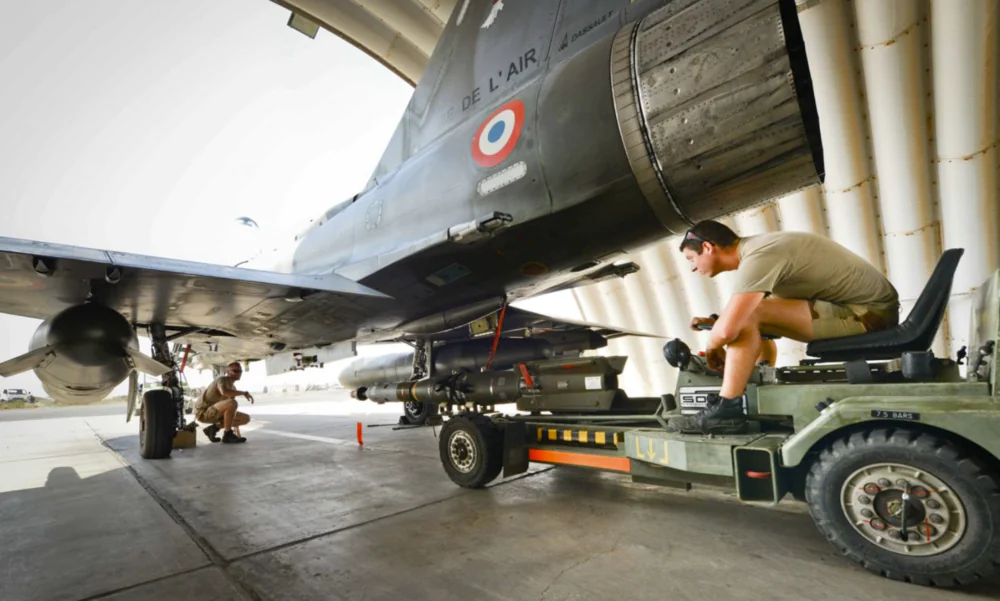
To this list can be added laser-guided aircraft bombs, such as the AS-30L ASM, or the French and American LGB, with munitions guided by ATLIS II or advanced optical infrared PDLCT and high-resolution PDLCTS targeting pods attached to the pylon below the right air intake.
A true airborne predator, it can comfortably perform not only in aerial combat but also when engaging ground targets.
Read also: Comparison of F-15 Eagle and F-16 Fighting Falcon fighters: pros and cons
Guidance system
The Mirage 2000 features an updated digital weapon delivery and navigation system (WDNS). The aircraft is equipped with the TV/CT CLDP laser designation unit from Thales Optronics, providing the capability for laser-guided firing both day and night. Under a contract signed in July 2008, a number of Mirage 2000D aircraft of the French Air Force were fitted with the Damocles laser designation system with a thermal camera, also from Thales Optronics.
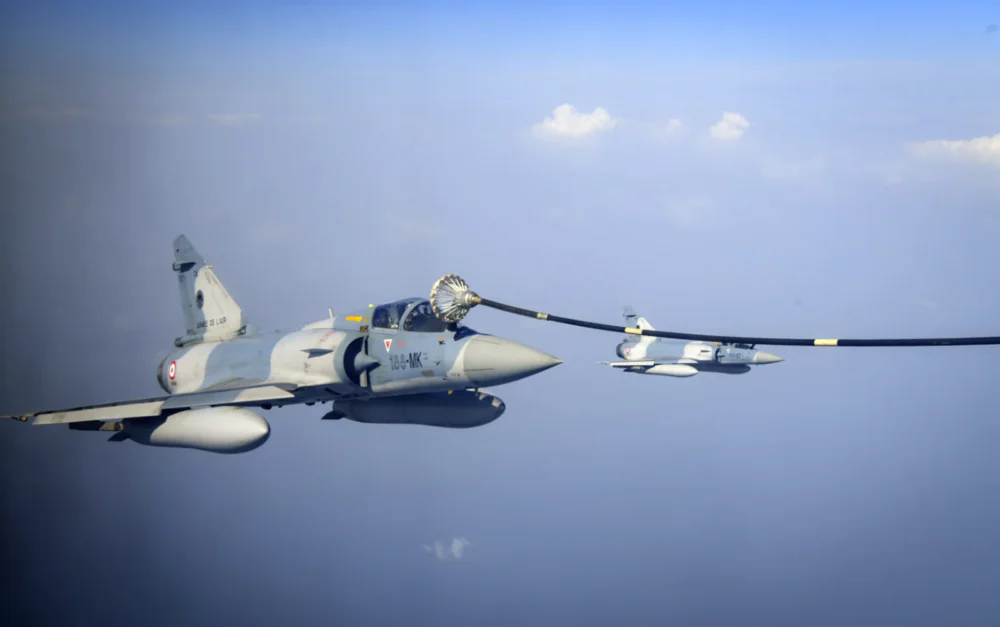
The Mirage 2000-5 is equipped with the multi-mode Thales RDY Doppler radar, providing multi-role capability in air defense. The radar also features a “look-down and shoot-down” mode. It can simultaneously detect up to 24 targets and track the eight most prioritized threats during scanning.
Read also: Weapons of Ukrainian Victory: ATACMS missiles for HIMARS and MLRS
Technical specifications of Mirage 2000-5
- Crew: 1 person
- Top speed: 2340 km/h
- Maximum speed near the ground: 1110 km/h
- Flight range: 3335 km
- Practical ceiling: 17006 м
- Climb speed: 285 m/s
- Length: 14.36 m
- Height: 5,30 м
- Wingspan: 9,13 м
- Wing area: 41 m²
- Weight: 13800 kg
- Gunnery: 2×30 mm DEFA 554 (two French-made aircraft cannons firing NATO-standard 30 mm caliber projectiles)
- Number of suspension points: 9 (5 under the fuselage, 4 under the wing)
- Weight of suspended elements: 6300 kg
Why deliveries of Mirage 2000 are so important for Ukraine
The need to replenish the arsenal of aircraft for the Ukrainian Air Force is undeniable. We all know that it is the Russian aviation that inflicts the greatest damage not only to the Armed Forces on the front lines but also to the civilian population in the rear. That’s why aircraft are essential for us. Yes, we’ve been hearing and reading for a long time that F-16s will soon appear in our skies. But aircraft are never redundant.
Why do we need aviation at all? Here I would highlight several important aspects. The most crucial among them is to deter enemy aircraft from our borders. As a resident of resilient Kharkiv, I feel this every day.
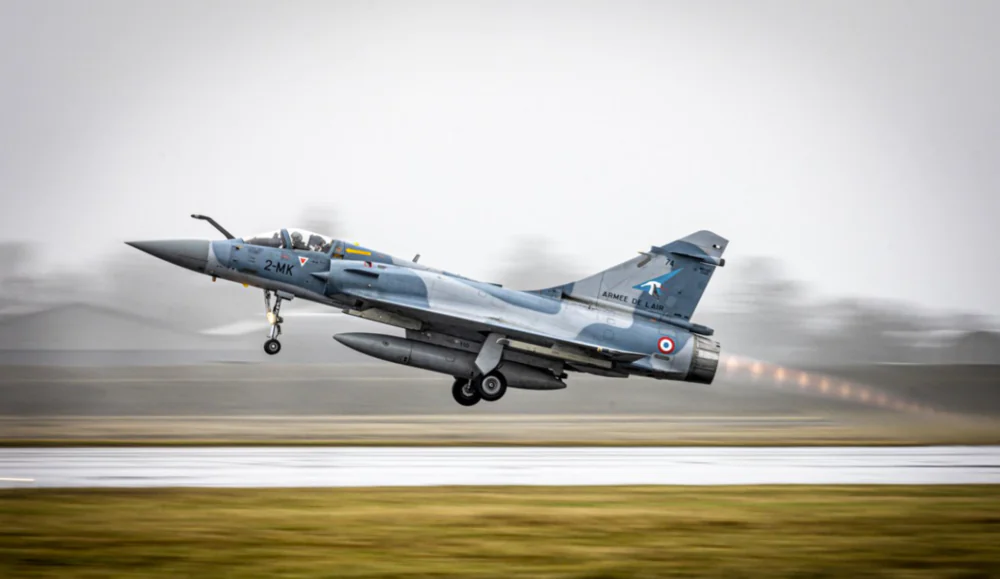
Looking at the Mirage 2000-5 in terms of its capabilities and tasks it can perform, it’s clear that it may not be effective for this mission. The reason is that the AIM-120 AMRAAM, which can engage targets at distances of up to 160 km in the C-8 version, is not integrated into this aircraft. Some may argue that it’s not guaranteed that this missile will be on the F-16s that will arrive in Ukraine. We’ll see about that later. However, the Mirage 2000-5 is equipped with MICA air-to-air missiles with a range of 80 km. This means it would need to fly into the enemy’s air defense zone to engage. I don’t think anyone will take such a risk.
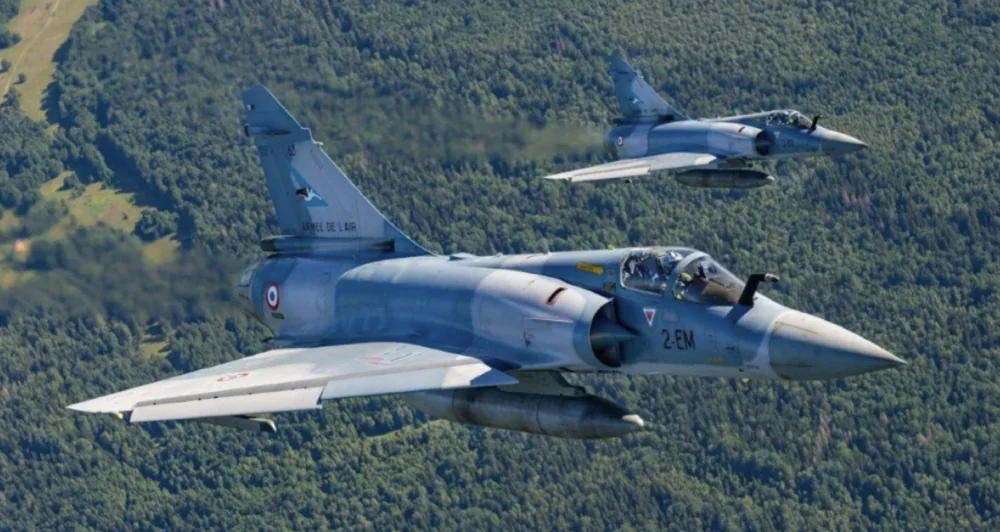
But for French aircraft, we have many other tasks. I’m talking about the same long-range cruise missiles, Storm Shadow / SCALP. They can inflict maximum damage on ammunition depots and enemy positions. There’s also the option with the Exocet missile. It’s also very interesting for such a mission because in its new versions, it has the ability to target not only ground targets but also coastal radiocontrast objects. Not to mention the anti-radar missiles AS37 Armat with a flight range of up to 120 km. They can “delight” Russian air defense.
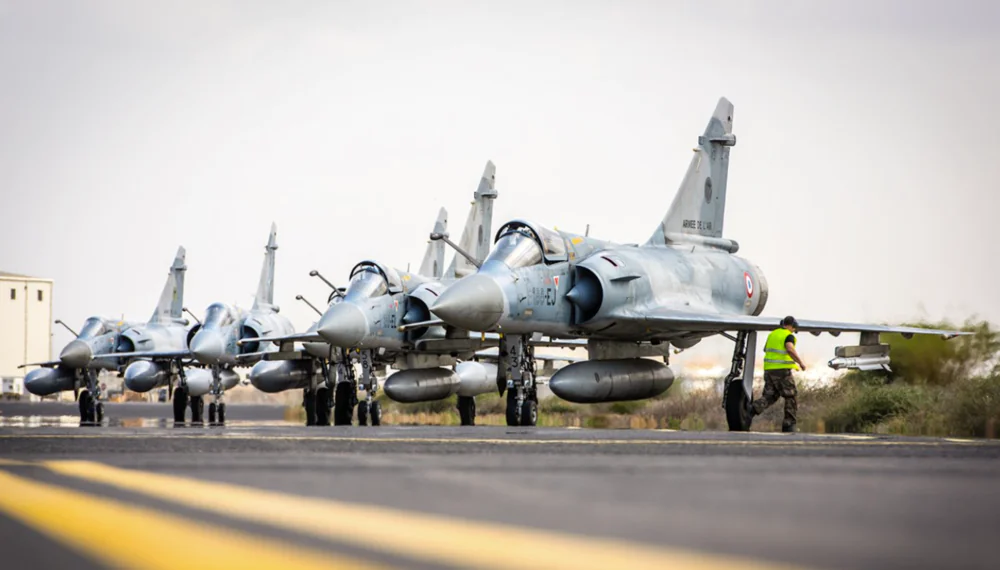
Currently, the Russians often use their UAVs, but the Mirage 2000-5 also has the capability to strike with long-range bombs, such as the AASM Hammer. At the same time, there seem to be no restrictions on the integration of JDAM-ER and SDB.
The rear area is also vulnerable to rockets. French aircraft would be useful here too. They can excellently cope with the task of intercepting cruise missiles and destroying drones. Yes, it will be quite expensive, but for this, we can use not only new MICA missiles but also older short-range air-to-air missiles like the Matra R550 Magic.
No matter how much we write about it, French Mirage 2000-5 fighters are a significant enhancement to the capabilities of the Air Force and the Armed Forces in general.
This is truly a unique and invaluable assistance from France. In the conditions of tough battles with the occupiers, every precision-guided projectile, every combat vehicle, every air defense system, every cruise missile, every combat landing craft, or combat aircraft is extremely necessary for us. Therefore, we sincerely want to thank our Western friends and partners for their help and support. There’s nowhere for the aggressors to escape retribution. Glory to Ukraine! Death to enemies! Glory to the Armed Forces!
Read also:
- Weapons of Ukrainian Victory: Iris-T SLM for Ukraine from Germany
- Weapons of Ukrainian victory: GLSDB ground-launched bomb review
- Weapons of Ukrainian Victory: Harpoon anti-ship missiles

